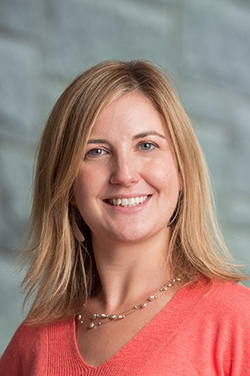St. Anthony Falls Laboratory, Auditorium
Current stormwater green infrastructure (GI) design mostly uses static principles, even though long-term monitoring indicates that these systems are anything but static. Infiltration is an active process during a storm event, evapotranspiration (ET) helps to restore soil storage capacity in between events, and there are seasonal and annual variations of all the components of the hydrologic cycle. As more municipalities adopt GI as a stormwater management strategy, optimizing these systems is important to intelligently site them, economically build them, and efficiently maintain them. Considering the dynamic nature of stormwater GI and the associated hydrologic processes will move towards optimal designs. Examples from southeastern Pennsylvania rain gardens and tree trenches are used to demonstrate concepts, although the framework is applicable to other GI and locations.

Bridget Wadzuk is a Professor in the Department of Civil and Environmental Engineering at Villanova University and works with the Villanova Urban Stormwater Partnership and the Villanova Center for Resilient Water Systems. Dr. Wadzuk teaches courses and researches in the area of water resources. She has over 14 years of experience specializing in stormwater management, with research on designing, implementing, monitoring, analyzing, and modeling various stormwater control measures (SCMs), including constructed wetlands, bioretention, green roofs, and infiltration trenches. Her focus within these systems has been to develop an understanding of the hydrologic and hydraulic processes within SCMs and manipulate them to optimize design and performance. This work has frequently been in collaboration with industry and municipal partners to develop actionable recommendations. Dr. Wadzuk is also engaged in community outreach and education on stormwater issues, including elementary and high school students as well as the broader stormwater community.